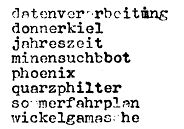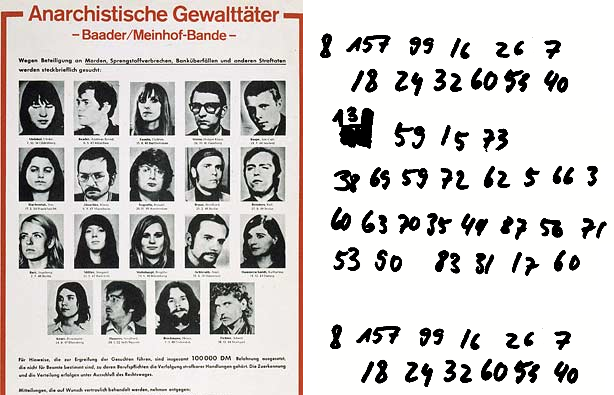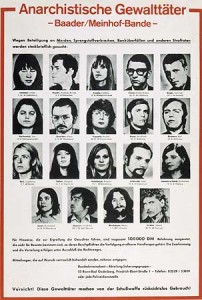A Cryptological Cold Case: The Andreas Baader Cryptogram
Andreas Baader, terrorist and member of the Red Army Faction, left an encrypted text. I have blogged about it several times, but so far no one has been able to decipher it.
In just under four weeks, the NSA’s Cryptologic History Symposium will take place. For this oldest and most important event on the subject of cryptologic history, one normally has to travel to the USA. However, the Corona pandemic has meant that this time the lectures will be held and broadcast online. The 2022 edition of the symposium therefore offers a potentially unique opportunity for Europeans to attend without having to fly across the Atlantic.
I will be at the symposium this time with two presentations. On the one hand, I will present together with Elonka Dunin on the parapsychological experiments of Robert Thouless. My own life-after-death experiment will also be discussed. On the other hand, there will be a lecture by me about the encryption methods of the Red Army Faction (RAF).
The fact that I am talking about the RAF will hardly surprise my readers – after all, I have already blogged several times about the cryptology of this terrorist group. As far as I know, there is no other source that systematically deals with the ciphers of the terrorists around Baader and Meinhof.
An unsolved cryptogram
Before I send my presentation slides in advance to the organizer at the end of the month, today I would like to go into the biggest unsolved mystery in connection with the RAF’s ciphers. It is about the following encrypted text that Andreas Baader left behind:
I have blogged about this cryptogram several times, but still I do not know the solution. So it is a cryptological Colde Case.
A cassiber from the year 1974
The cryptogram in question comes from a cassiber that Baader wrote in January 1974 in the prison in Schwalmstadt-Ziegenhain. This 30-page text is accessible on the Social History Portal. It was intended for Baader’s RAF comrades who were still at liberty. The Kassiber contains numerous tips for life in the underground. Encryption also plays a role in it. In particular, Baader describes an encryption method that uses as a key a list of words that the user must memorize. Here is an example:

Quelle/Source: Social History Portal
With this list, each letter can be encoded based on the line and position in the respective word on the list. For example, one can encode the A as 12 (1st line, 2nd letter). Also 31 (3rd line, 2nd letter) would be possible for the A. The plaintext CIPHERBRAIN can be encoded as follows:
83 82 51 52 54 26 410 64 63 56 23
Note, however, that in the Andreas Baader cryptogram, zero also appears in two-digit numbers – for example, in the form of 10, 40, and 60. Perhaps this means that one must start at zero when counting the letters. Or the zero indicates that the same keyword as the previous letter must be used.
The number 157 in the first line would mean that there are at least 15 words in the list. The single-digit numbers (6 7 and 8) could be shorthand for 16, 17, and 18.
However, this is all speculation. It may well be that Baader used a completely different procedure for this cryptogram.
Can any reader say more about this cold case? If so, I will include this in my paper and present it to the audience at the Cryptologic History Conference in four weeks.
If you want to add a comment, you need to add it to the German version here.
Follow @KlausSchmeh
Further reading: Ein verschlüsselter Initialisierungsritus der MafiaLinkedin: https://www.linkedin.com/groups/13501820
Facebook: https://www.facebook.com/groups/763282653806483/





Letzte Kommentare